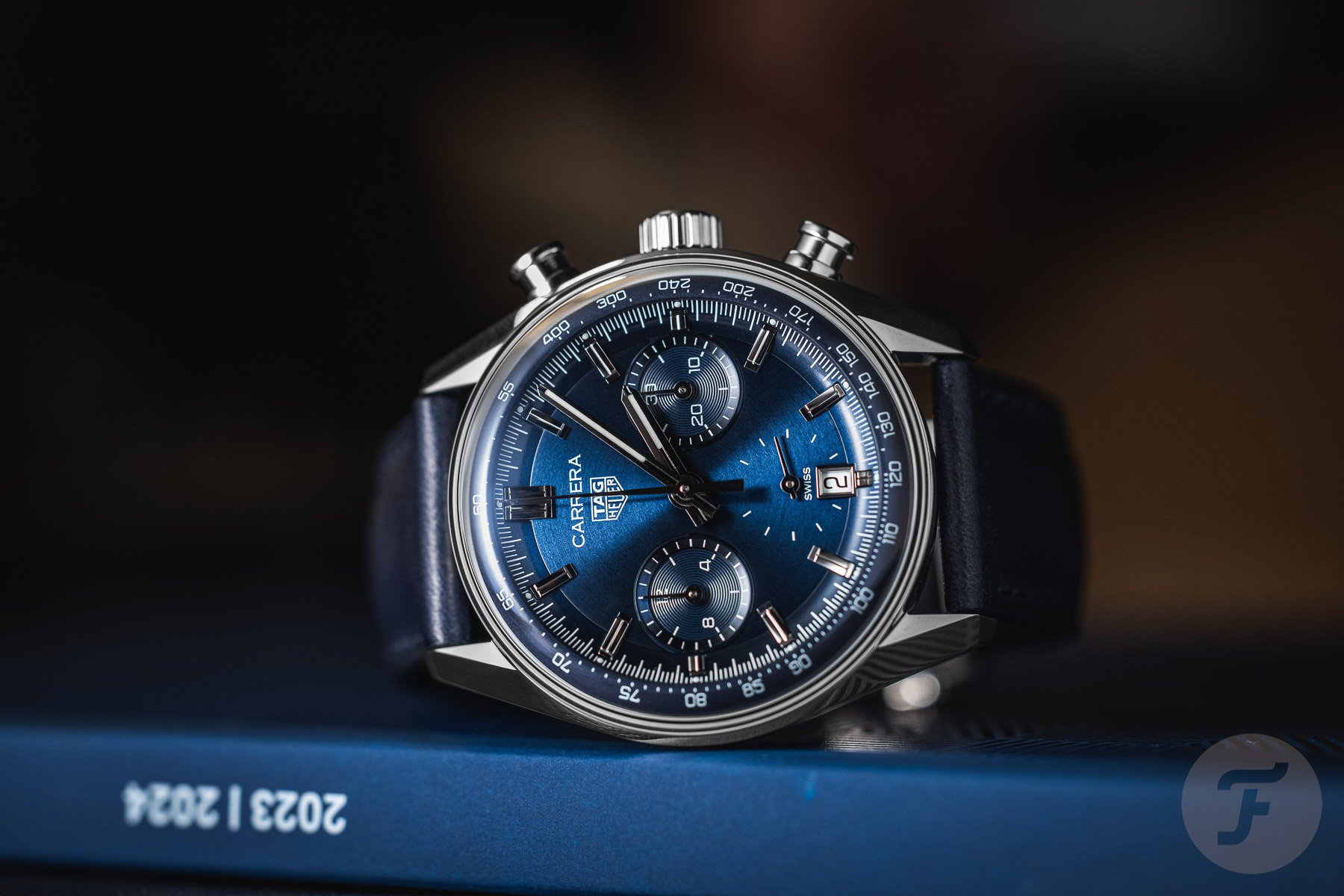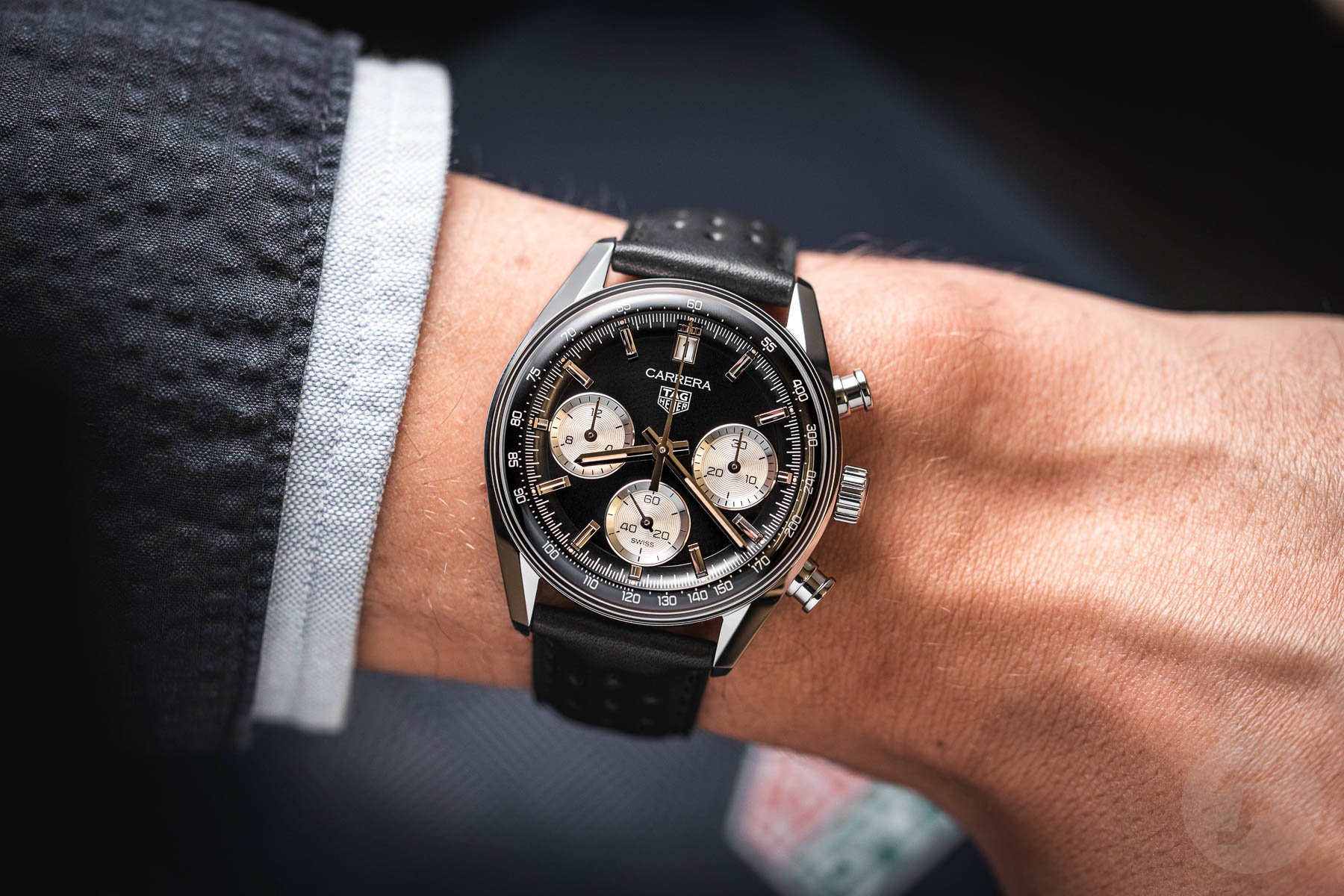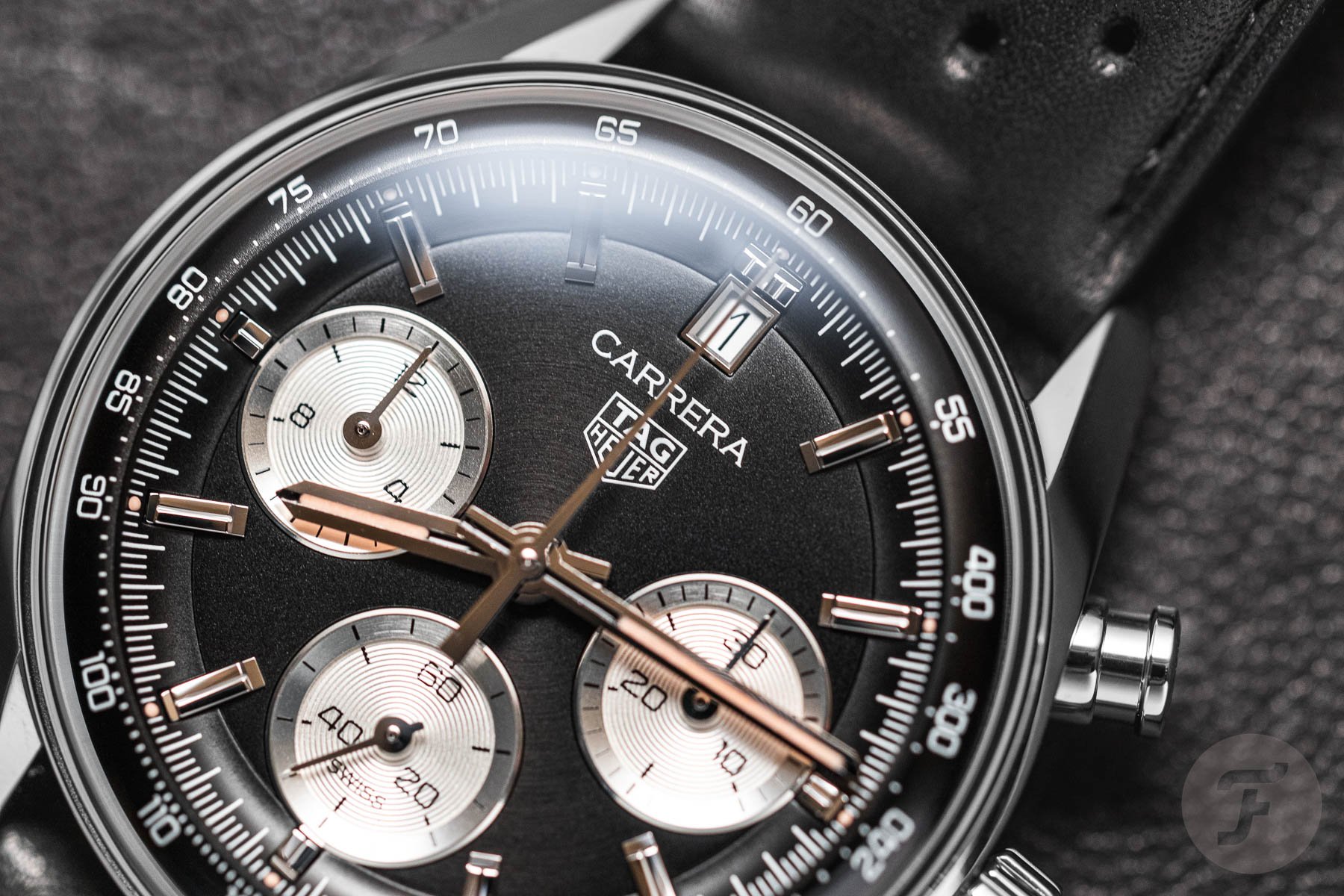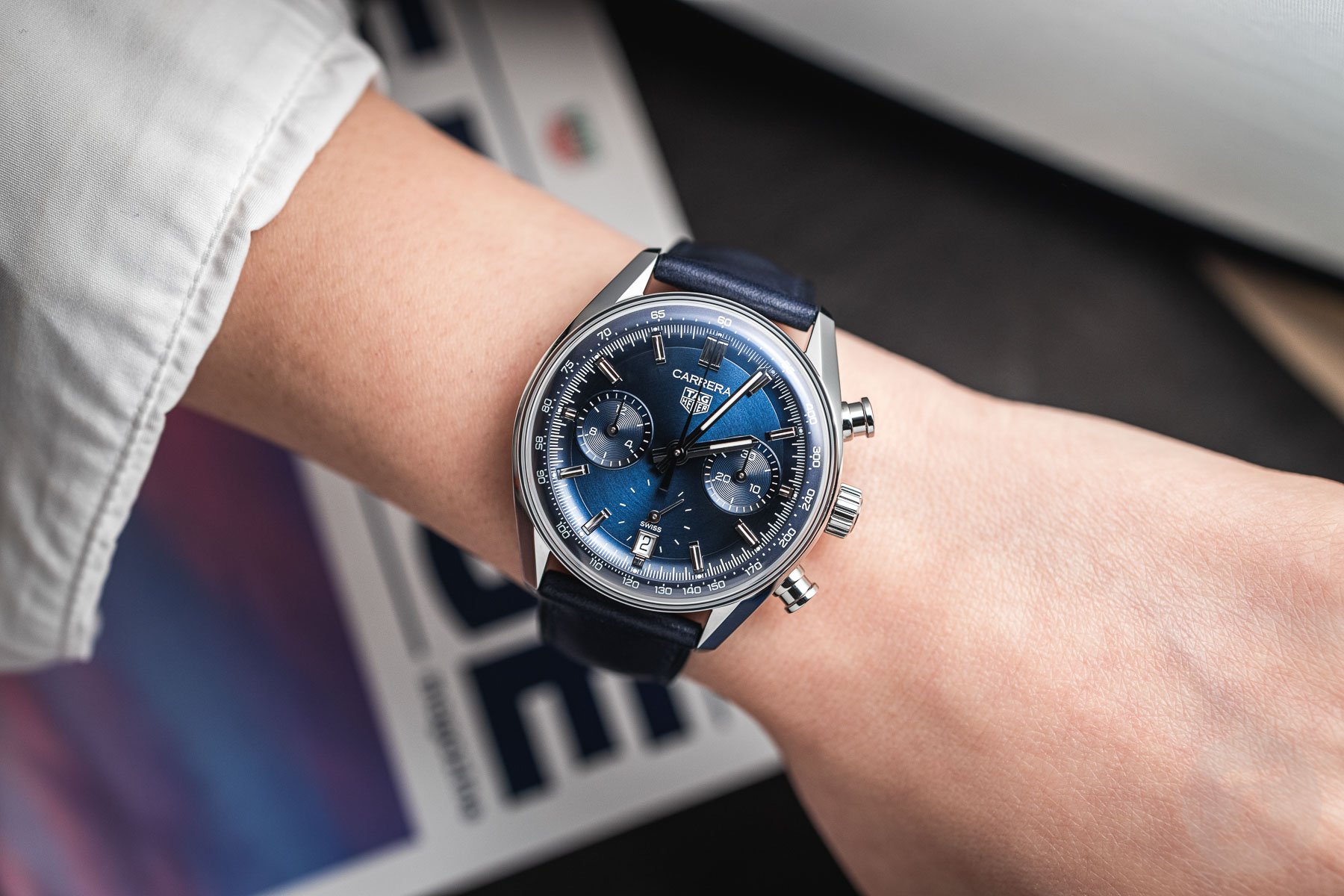Hands-On: The New TAG Heuer Carrera Glassbox — The Evolution Of Jack Heuer’s 1963 Brainchild
In 1962, Jack Heuer became the fourth-generation director of the Swiss horological manufacturer founded by his great-grandfather. After a strong debut with the Autavia, Jack set his sights on a strong follow-up. Inspired by tales of the Carrera Panamericana — a daring (and deadly) 3,500km Dakar-like race across Mexico — the Heuer Carrera (which borrows the Spanish word for “race” for its name) was born. The race ran for only a few years, with a combination of dangerous road conditions, poor organization, and speed resulting in a significant death toll. The chronograph, however, is still around 60 years later. It has been quite the journey for the Carrera over the past six decades. In that time, it survived the Quartz Crisis, existed in many different iterations, and made several comebacks. But its 60th anniversary was marked with two new models that embody an evolution of this classic timepiece.
These two new TAG Heuer Carrera Glassbox chronographs were introduced during this year’s Watches and Wonders fair. There, they shared the spotlight with the other Carrera celebrating its 60 years, the Porsche 911. But, as lovely and significant as the namesake vehicle is, I’m not here today to talk to you about cars. Instead, let’s focus on the latest incarnation of a mechanical chronograph to bear the Carrera name. With 60 years separating these two latest models and the very first, significant differences are to be expected. Yet the DNA of the original has a strong presence in the new Glassbox models. These are truly a mixed bag of old and new, tastefully executed in a way that highlights the original design while giving it a contemporary twist.
TAG Heuer Carrera Glassbox
Before I get into my experience with these watches on my wrist, let’s quickly run through some of the features. Design-wise, the TAG Heuer Carrera Glassbox models hark back to the compax (or “tri-compax”) chronograph layout of the original Carrera. The three sub-dials tracking an elapsed 30 minutes, 12 hours, and the running seconds have shifted somewhat, with the running seconds and 12-hour counter having swapped positions. The sporty yet elegant shape of the original Carrera is there but is upsized to more modern dimensions. The case measures 39mm in diameter and is given a more ergonomic curve. With a 46mm lug-to-lug, it comes in at 13mm thick, the crystal accounting for a significant portion. Another new feature is the pushers. This particular pusher design is new to the 39mm Carrera but not a first in the brand’s catalog. As you might expect, the pushers’ action is pleasantly snappy and responsive.
The feature that explains the Glassbox name is the dramatically domed sapphire crystal. This is nothing new per se, but what is new is the dial’s complementary shape. As you can see in the photos, the dial’s concave shape curves upwards and peaks at the inner edge of the tachymeter scale. From there to the edge of the dial, a convex downward curve follows the crystal’s shape. The slightly recessed applied markers on the dial match the downward slope of the inner dial. This adds a lot of depth and dynamism to the already-busy dial. It’s safe to say a lot is going on at once, but everything comes together in a harmonious, balanced manner. Furthermore, these two watches are far from being the same. Subtle (and not-so-subtle) differences set them apart. These include the position of the date window and the design of the sub-dial at 6 o’clock.
Pick your Glassbox
I refer to the new TAG Heuer Carrera Glassbox as just one watch. However, the blue and black dials differ enough that one could consider them two separate models. The blue version takes a more modern and monochromatic approach. The dial and sub-dials (and strap) have the same blue tone, with silver and white used for all the details. At 6 o’clock, the sub-dial is not recessed into the dial like the rest. Instead, minimalist marks are printed onto the dial, and the date window becomes the focal point. The black and silver panda dial has more of a retro vibe with faux-aged lume and an (arguably) more classic colorway. The date window sits at 12 o’clock in a nod to the 1960s Heuer Carrera “Dato 12” reference 3147. This caught our eye when we first received the press release and was met with mixed reactions from the Fratello team members.
My initial distaste for this daring design choice somewhat subsided when I learned of its referential nature. However, I remain slightly unconvinced. Admittedly, in person, it’s less intrusive than you might think from the pictures. However, the central chronograph seconds hand does obstruct the date slightly, and the window is higher than that of the original. I feel that the ’60s reference wears this quirky feature better. This is thanks, in part, to its more minimalist design but also to removing the frame and using red text for the date (see above). So, whether you prefer the blue or black Carrera Glassbox (the latter comes on a lovely perforated black leather strap), neither will disappoint on the wrist, where they wear exceptionally well. The proportions are spot on, and I had a hard time taking it off my wrist when our time together ended.
What’s in the (glass)box?!
Brad Pitt famously asked the question in David Fincher’s 1995 thriller Se7en. But this box is made of glass, so all you’ll have to do to reveal its contents is to flip it over. Inside, you’ll see TAG Heuer’s caliber TH20-00. The movement has a stark, purposeful, and modern appearance. The rotor is semi-skeletonized in the shape of the TAG Heuer shield logo. Its edge reveals some of the movement’s features, including its name, the number of jewels, and Swiss origins. It has a rather impressive 80-hour power reserve, which should remain nicely topped up by the bidirectionally winding rotor. The screw-down case back provides a 100m water resistance rating. This is rather generous for a chronograph without a screw-down crown and should make for worry-free wearing, even if you should somehow end up taking an unexpected dip in the pool.
Overall, I’d call the new TAG Heuer Carrera Glassbox a worthy successor to the original. It modernizes Jack Heuer’s original design in a uniquely dynamic manner, something that we should not take for granted. Taking an iconic design and giving it a futuristic redesign is almost sure to end in a generous helping of eye-rolling and a pinch of disappointment. However, the TAG Heuer design team has proven that it is indeed possible. This was one of the quiet hits at Watches and Wonders this year, deservedly so. I know I’m not alone in hoping for the brand to develop the Glassbox model further, with additional dial colors and perhaps even a compur (or “bi-compax”) version.
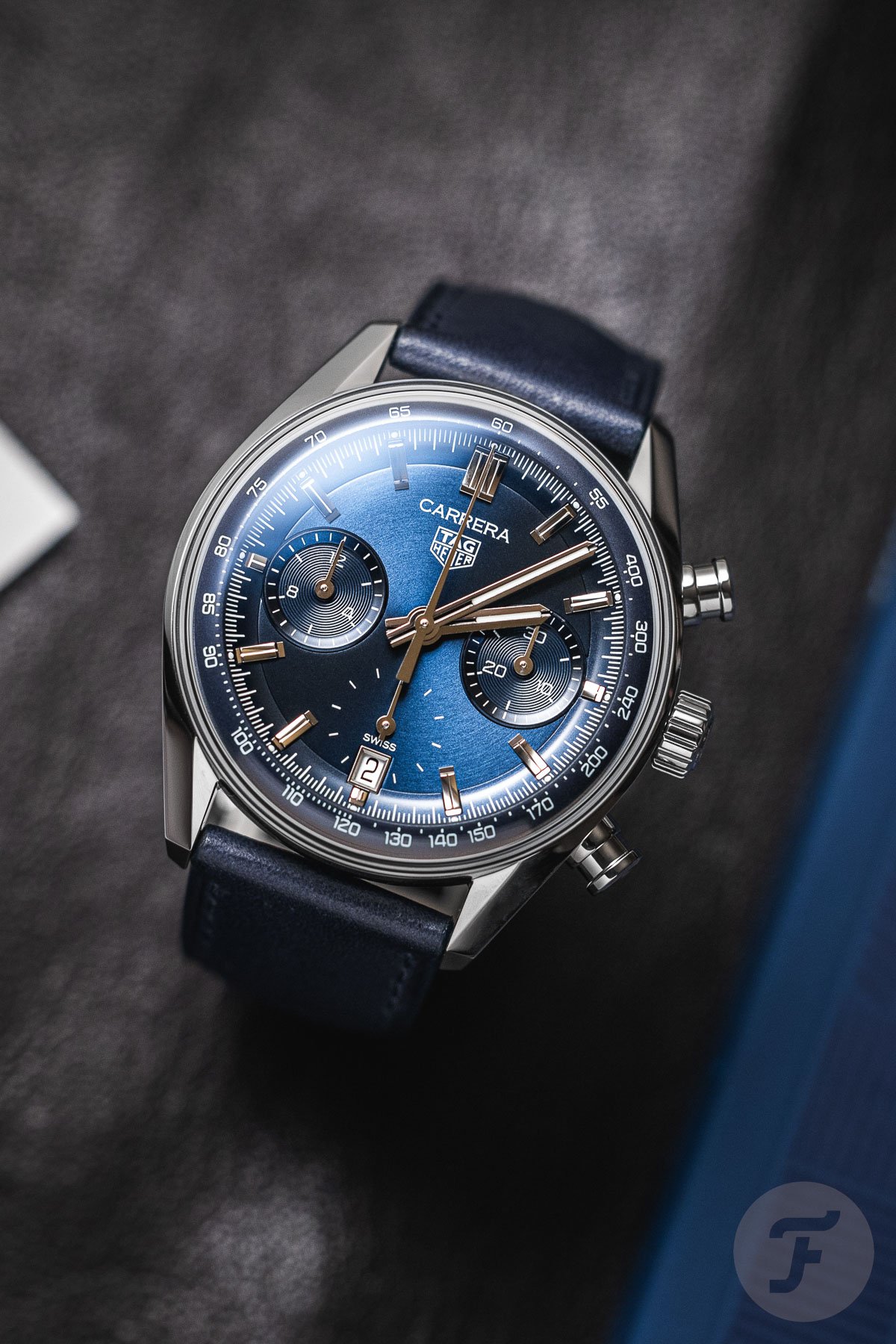
Just add Gosling
A small update to the story. The brand has released a short film that remained under embargo until this evening. It features Canadian actor Oscar Nominee and TAG Heuer brand ambassador Ryan Gosling. We usually wouldn’t pay too much mind to something like this. But we had a preview of the short at Fratello HQ and genuinely had a laugh and enjoyed it. So without further ado, click below and get your daily dose of Gosling and Carrera (in both watch and car form).
https://www.youtube.com/watch?v=cuJjngO6uxk&ab_channel=TAGHeuer
Final thoughts
The 2023 TAG Heuer Carrera Glassbox is a celebration of the 60th anniversary of the Carrera chronograph. It brings a fresh breath of modernity to the model through a uniquely shaped dial that complements its retro domed crystal and increases the legibility of its tachymeter scale. This automatic chronograph will set you back €6,500, which seems to make sense within the context of today’s watch prices. For context, an Omega Speedmaster, another iconic chronograph (and trusty Fratello yardstick), currently has a price of €7,500. A great-looking 39mm automatic chronograph with a unique dial design and excellent pedigree, the Carrera Glassbox is a winner in our books. For more information, check out the TAG Heuer website.
What do you make of this latest chronograph from TAG Heuer? Do you also think it to be a tasteful and impressive take on a classic? Or has it taken the concept a step too far? Leave your thoughts in the comments below!

